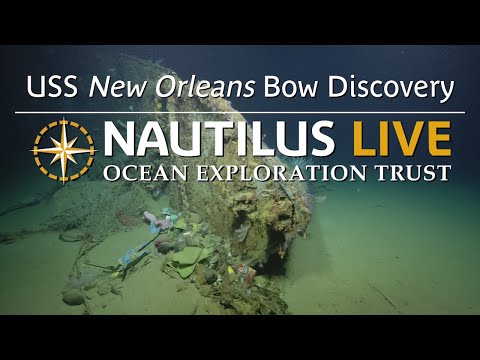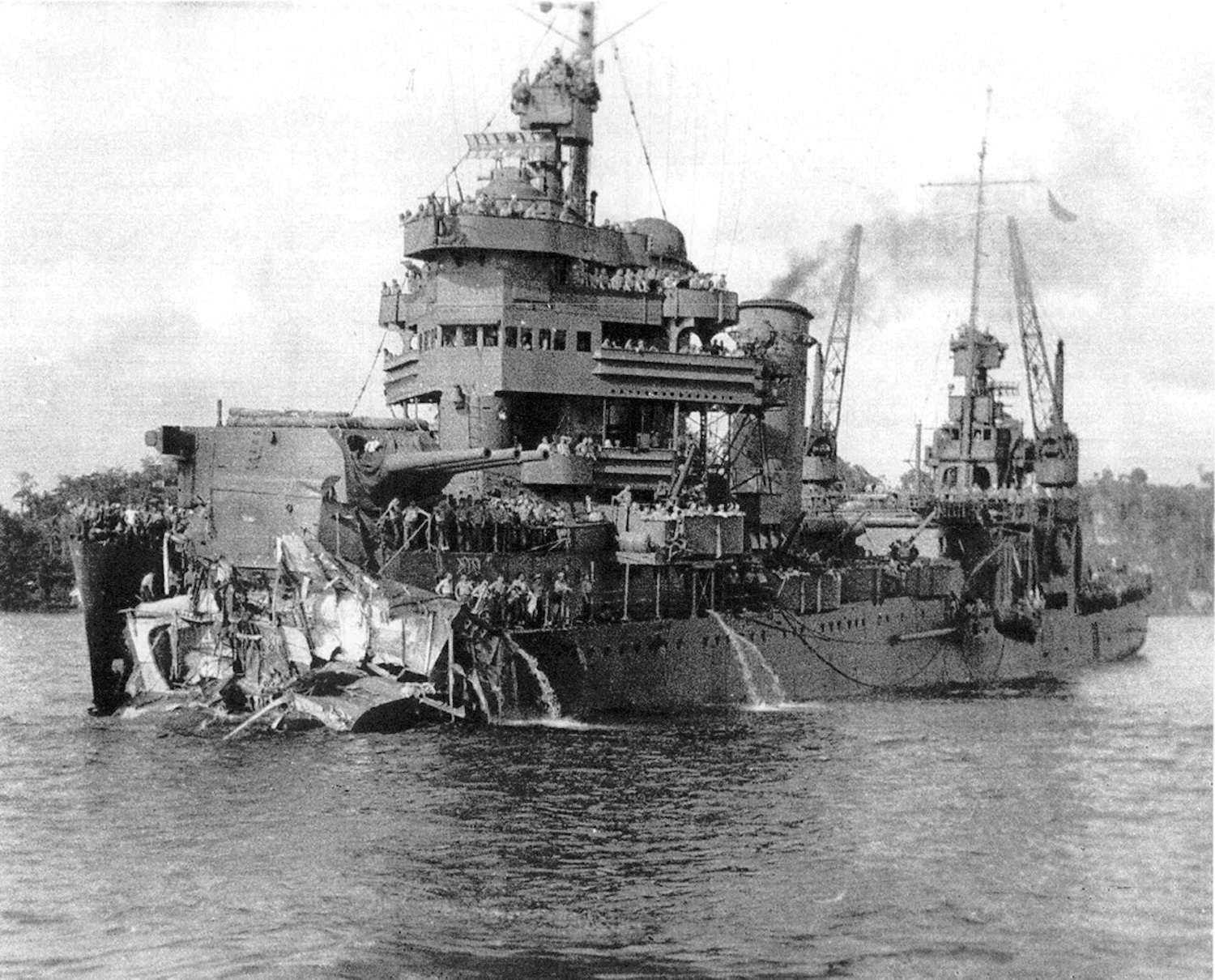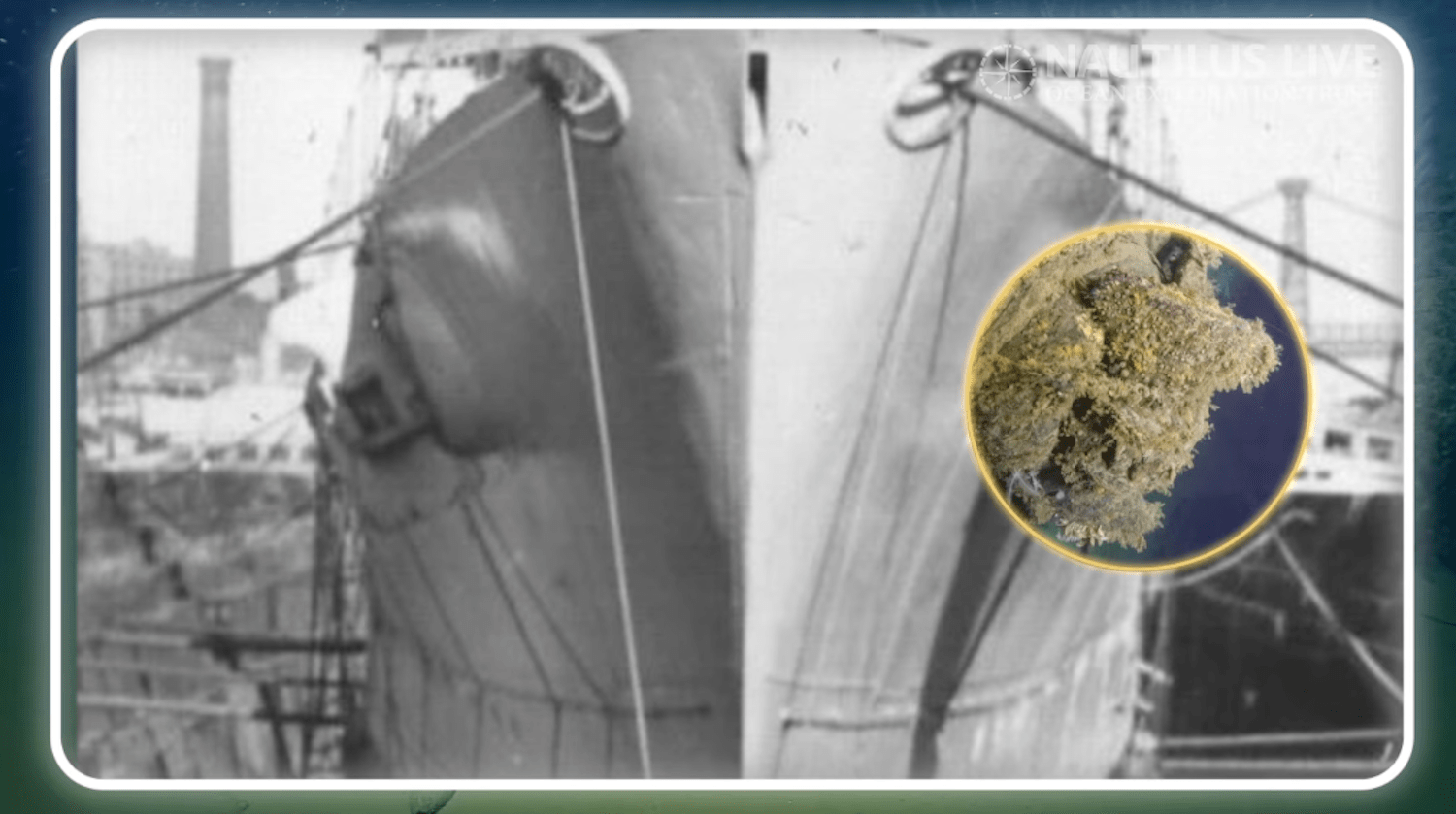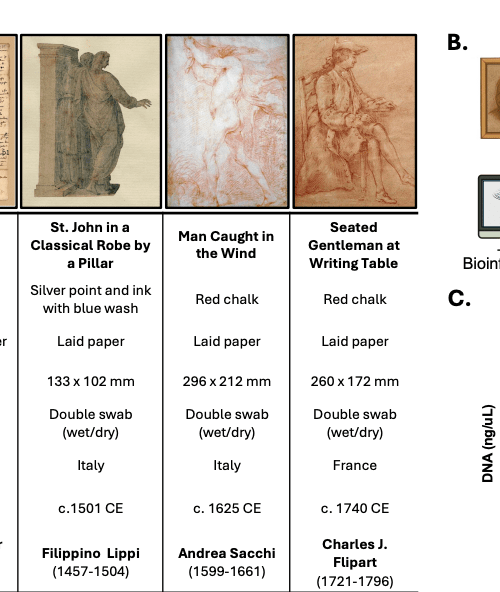A few flecks of residual paint and an engraved anchor were enough to link mystery wreckage at the bottom of the South Pacific to the saga of the USS New Orleans. Researchers aboard the NOAA Ocean Exploration Trust’s Nautilus vessel accidentally discovered the World War II heavy cruiser’s nearly 100-foot-long bow section while remotely mapping the Iron Bottom Sound near the Solomon Islands earlier this week.
Allied and Japanese forces fought five major naval battles in the region between August and December 1942, resulting in the loss of over 20,000 lives, 111 naval boats, and 1,450 planes. But on November 30, 1942, one more ship nearly brought the total number of downed ships to 112.

During the Battle of Tassafaronga, the USS New Orleans was struck by a Japanese torpedo that detonated its forward magazines, killing 182 men and ripping away a large forward section of the cruiser. Instead of abandoning what was left, the remaining crew quickly developed a plan in the hopes of somehow saving their vessel.
After using an auxiliary craft to reach a nearby island, sailors felled coconut trees and used the logs to fashion a makeshift bow. They then strapped their improvised section to the New Orleans and set course to Australia—but there was yet another issue. Without the bow propeller, the damaged ship was no longer capable of sailing forward. This meant the crew needed to steer their vessel backwards to port. On December 24, a heavily modified USS New Orleans managed to arrive at Cockatoo Island Dockyard in Sydney, Australia, where it received a full repair. The heavy cruiser—both original and welded sections—remained in service until its decommissioning in 1947.

In all that time, the whereabouts to the bow of the USS New Orleans remained a mystery. Earlier this month, however, the Ocean Exploration Trust began a 21-day, noninvasive archeological survey of cultural heritage sites in Iron Bottom Sound. At one point, one of the team’s uncrewed surface vehicles flagged an anomaly that, while large, wasn’t big enough to be a warship. Researchers launched an ROV from the Nautilus to explore the area, ultimately coming across the lost bow at a depth of 2,214 feet. After nearly 83 years at the bottom of the Pacific Ocean, what’s left is now covered in sea life—as well as a few bits of modern-day trash deposited by the water’s currents.

The exact coordinates of the USS New Orleans’ remains are being withheld to protect their integrity, but after experts’ confirmation of its location, researchers have finally answered a lingering question to one of World War II’s strangest and ingenious rescue efforts. Meanwhile, there’s still a few days left for the team to stumble across even more discoveries—the Iron Bottom Sound expedition is set to conclude on July 23.






